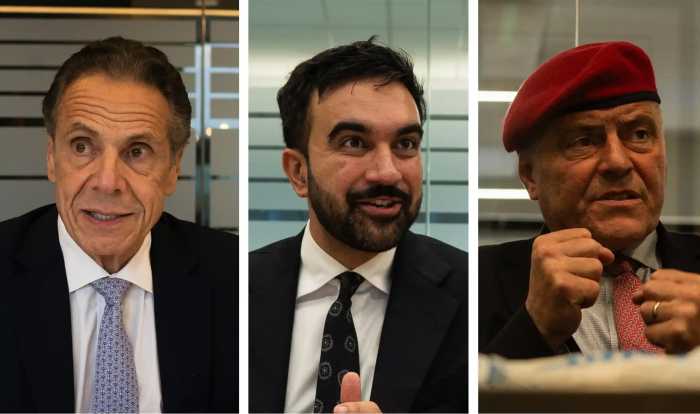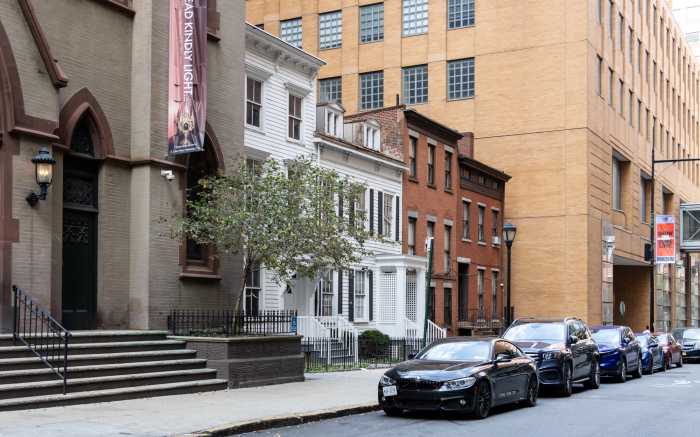BY PAUL SCHINDLER | With Governor Andrew Cuomo and legislative leaders announcing a budget deal late in the day on March 27 — and specific bills putting that into law now being voted on in the Senate and Assembly — advocates for homeless youth as well as the city’s Department of Youth and Community Development (DYCD) take little consolation from their success in maintaining 50 percent of the money available in the current fiscal year to fund emergency shelter programs next year.
In a statement the day after the budget agreement was unveiled, Carl Siciliano, executive director of the Ali Forney Center, which provides housing and social services to homeless LGBTQ youth, pressed Cuomo and legislators — who, after all, still had to vote their approval — to reconsider the cuts.
Albany cuts could deny 200 homeless NYC youth needed beds this year
“Balancing a budget by throwing poor children out of shelters to fend for themselves in the streets is unspeakably wrong,” Siciliano said in a written statement. “It shows a reckless indifference to their safety and welfare.”
In Cuomo’s original budget proposal, the $4.7 million in state money that funds emergency homeless youth beds this year — $1.4 of which went to New York City — would have been zeroed out as a dedicated revenue stream. Instead, emergency shelter facilities for what, in government parlance, are termed runaway and homeless youth (RHY) funded out of the existing revenue stream would have been bundled with eight other state programs and competed for money from a block grant. According to DYCD figures, however, the total funding for those nine programs under the block grant would have declined from $85 million in aggregate dollars in this fiscal year to $35 million next year.
At the behest of the Legislature, the governor agreed to retain the current nine revenue streams, but funding for emergency shelter beds was set at only $2.355 million statewide, or half the current level. Funds available to New York City will decline from $1.4 million to $700,000.
DYCD and Siciliano agree that such a cut means the city will lose 19 beds out of only 252 currently available on an emergency basis for kids on the street.
A 2007 survey completed by the Empire State Coalition found that roughly 3,800 youths are living on the streets on a given night in New York City, with one-third or more of them LGBTQ-identified. That figure may well have climbed given the economic reversals that intervened since then.
In an interview last Friday, before the budget agreement was finalized, Susan Haskell, DYCD’s assistant commissioner for Vulnerable Youth and Special Needs Youth, described the prospect of a 50-percent reduction in funding as “scary” and a “disproportionate” hit, and said, “I’m not sure people really understand the impact of this sort of cut. I just think it’s important for people to know this population is not part of other systems the government has set up, such as juvenile welfare.”
Haskell acknowledged that some youth served by emergency shelters have had run-ins with the law — with drugs and survival sex work widely known as particular risks — but she emphasized that getting youth off the streets and stabilizing their lives, at which point they can access other transitional living arrangements, is critical in helping them avoid getting caught up in a more serious way with the criminal justice system.
The beds that DYCD are able to fund, in part through funds the state provides, represent the first step toward more positive “youth development” that offers an opportunity for a productive life, Haskell said.
Brooklyn City Councilman Lew Fidler, who as chair of the Youth Services Committee has been a staunch advocate on homeless youth issues — often sparring, in fact, with DYCD — had joined the city in pressing the Senate and Assembly to improve on the original ask they made of the governor on emergency shelter funding. On March 18, he met with State Senator Diane Savino of Staten Island and Assemblywoman Amy Paulin of Westchester, both Democrats who chair the Committees on Children and Families in their respective chambers.
“I made a very personal and impassioned plea that 50 percent was not enough,” Fidler said. “I think they were sympathetic.” At a March 25 City Council budget hearing, as agreement in Albany seemed imminent, Fidler told advocates in attendance, “Don’t go to Albany in the next 24 hours and ask for only half a loaf.”
The morning after Cuomo, the Senate Republican majority leader, Dean Skelos, and the Assembly’s Democratic speaker, Sheldon Silver, appeared together to tell reporters they had reached agreement, Savino told Gay City News that saving 50 percent of the funding was “certainly not enough, but it was the best we could do.”
Ali Forney’s Siciliano explained that emergency shelter, where youth are generally only allowed to stay for 30 days while they are stabilized and given help in finding other — often supportive transitional — housing, has a typical turnover of ten residents per bed each year. A loss of 19 beds, then, could rob close to 200 homeless youth of the opportunity to come in from the cold and start down a more promising road. DYCD’s Haskell offered that same analysis.
Siciliano also noted that Covenant House, a Catholic-run facility that dwarfs any other shelter efforts in the city, now has a waiting list, something it didn’t have when the Empire State Coalition did its 2007 census. He warned that the number of kids living on the streets of New York each night, after nearly three years of economic sluggishness, could well be significantly higher than 3,800.
Ali Forney — which offers 32 spots in longer-term transitional housing for LGBTQ young people, many of whom have experienced harassment and even violence in facilities not tailored to queer youth — has 12 emergency beds on top of that in two facilities. Siciliano fears that the state budget cuts could force him to close up at least one of those units.
Haskell talked about the importance of protecting the gains the city has made in recent years in addressing the problems of homeless youth. “The challenge would be maintaining the system that has strengthened in the last four years,” which she said has managed to diversify housing opportunities so that specific populations among the young — she mentioned LGBTQ and Orthodox Jewish youth as well as those who were victims of sexual exploitation as examples — can find shelter where they feel safe and welcomed.
Siciliano noted that New York State has funded programs for runaway and homeless youth since 1978, and that as recently as 2007, the total funding for emergency shelter beds for that population stood at $6.8 million, falling to 4.7 million this year and 2.36 next year.
Late last spring, a mayoral commission established to study the needs of LGBTQ homeless youth recommended that over the next five years the city increase the number of regulated shelter beds — in both emergency and transitional settings — geared to that population by 200.
By cutting 19 beds in emergency shelters serving both LGBT and the general homeless youth population, Haskell said, the city is losing ground rather making any headway.



































